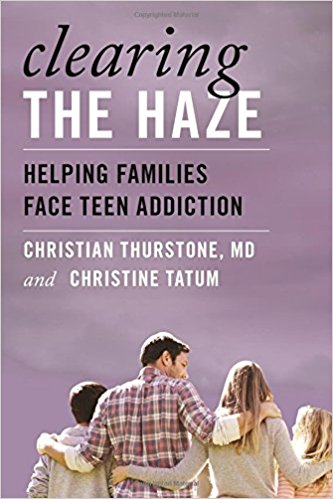A few months ago, Jody Hensley, a sharp thinker and supporter of the nonprofit Massachusetts Prevention Alliance and co-coordinator of SAM Massachusetts, which seeks to curb drug abuse and addiction in the Commonwealth, asked a great question at an event in Boston where I was honored to speak:
If we, as a nation, were so concerned about lead exposure that we worked hard to remove it from gasoline, paint and air, what should be our collective response to marijuana given everything responsible science already knows about this drug?
Indeed, the United States has worked for about 45 years to reduce lead exposure in children. Why the all-out effort to remove the soft and malleable metal from so much of our lives? Because it harms kids’ developing brains and decreases their IQ.
In 1968, the average serum lead level among children in Chicago was 30 micrograms per deciliter. Twenty years later, the average was 12 micrograms per deciliter.1 Why that significant decline? Because people knew low-level childhood lead exposure decreases IQ by 7.4 points — and that high-level exposure decreases IQ by an additional 2.5 points.2
Interestingly, childhood exposure to marijuana is also associated with drops in IQ:
- First trimester, in-utero exposure predicts a 5-point drop in IQ at age 6. So, mothers who use marijuana during their first three months of pregnancy — when they are less likely to realize they’re even pregnant — immediately put their children at a disadvantage.
- Heavy exposure to marijuana starting in adolescence predicts up to an 8-point drop in IQ.3,4
So, again, the permanent IQ loss associated with childhood lead exposure is highly similar to the permanent IQ loss associated with childhood marijuana exposure.
It’s also interesting that our country’s prevalence rates of childhood exposure to lead and marijuana are similar:
- Conservatively, 225,000 children are born every year having been exposed to marijuana in utero. And every year, approximately 232,000 adolescents go on to use marijuana at levels associated with an 8-point drop in IQ.5-7
- Meanwhile, the Centers for Disease Control and Prevention estimates that 500,000 children in the U.S. have a serum lead level greater than 5 micrograms per deciliter.8
Our nation’s response to protect children from marijuana exposure should be as serious as our response to protect them from lead exposure — but it’s not close. Is that because many adult marijuana users — most of whom first tried the drug when they were kids — don’t have as much fun with lead? Is it because many adults aren’t aware of marijuana’s irreversible harms to brain growth and development?
I don’t know. But I do have some ideas about what our collective response to marijuana should be:
We should acknowledge the risks associated with marijuana use for both children and adults. Marijuana-legalization advocates are taking pages from the playbook of Big Tobacco. Denials that marijuana is addictive, impairs driving and affects memory and learning are like hearing all over again from tobacco executives — who told us for decades that smoking didn’t cause cancer and that secondhand smoke wasn’t problematic for anyone.
We shouldn’t commercialize marijuana. Commercializing substances creates a profit motive to advertise and market to kids. After all, people selling addictive substances constantly need new customers — and, ideally, they win customers for life. To get those new customers for life, they know they have to hook kids, whose young, developing brains are more vulnerable to becoming addicted. We know that 80 percent of alcohol and tobacco company profits come from heavy users, most of whom started using in childhood.9
R. J. Reynolds: “Realistically, if our company is to survive and prosper over the long term, we must get our share of the youth market.”
Lorillard: “The base of our business is the high school student.”
Phillip Morris: “Today’s teenager is tomorrow’s potential regular customer… Because of our high share of the market among the youngest smokers, Philip Morris will suffer more than the other companies from the decline in the number of teenage smokers.”
We have to focus on marijuana prevention and early intervention — not just on education. Education about the effects of marijuana is good, but it does little for the approximately, 50-60 percent of American teens who already are using the drug by their senior year of high school.
We have to ensure kids struggling with addiction get the healthcare they need — even if that means the public pays for it. Research shows young people will got to treatment voluntarily if it is paid for.10,11 And if treatment is located in schools, it becomes even more accessible — which is something I am working on with Dr. Paula Riggs of the University of Colorado.
Sources
1. Hayes et al. (1984), Pediatrics 93:194-200
2. Canfield et al. (2003), NEJM 348:1517-1526
3. Goldschmidt et al. (2008), J Am Acad Child Adolesc Psychiatry 47:254-263
4. Meier et al. (2012), Proc Natl Acad Sci USA 109:E2657-E2664
5. United States Census (2012), http://www.census.gov/compendia/statab/cats/births_deaths_marriages_divorces.html
6. Substance Abuse and Mental Health Services Administration (2013), National Survey on Drug Use and Health, https://nsduhweb.rti.org
7. Hall and Degenhardt (2009), Lancet 374:1383-1391
Centers for Disease Control and Prevention (2013), http://www.cdc.gov/nceh/lead/
9. Newsweek, 2012. The New Pot Barons: Businessmen bank on marijuana. http://www.thedailybeast.com/newsweek/2012/10/21/will-pot-barons-cash-in-on-legalization.html
10. Riggs et al. (2010), Arch Pediatr Adolesc Med 16:1026-1034
11. Thurstone et al. (2010), J Am Acad Child Adolesc Med 49:573-582



Thanks for your article. I think this is an important point and I don’t understand why we are ignoring the dangers of marijuana. It’s one thing to sell it, but it’s deceptive to not warn people that common use can have profound affects on our minds and bodies.